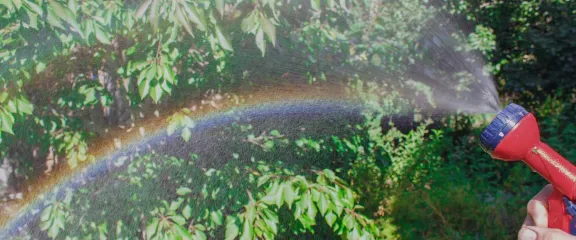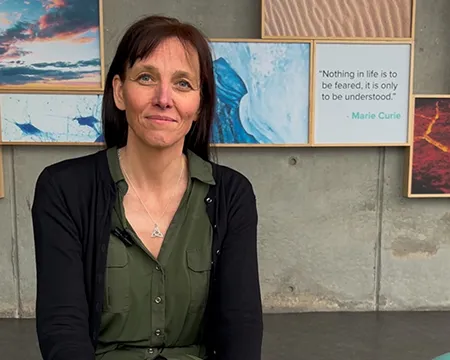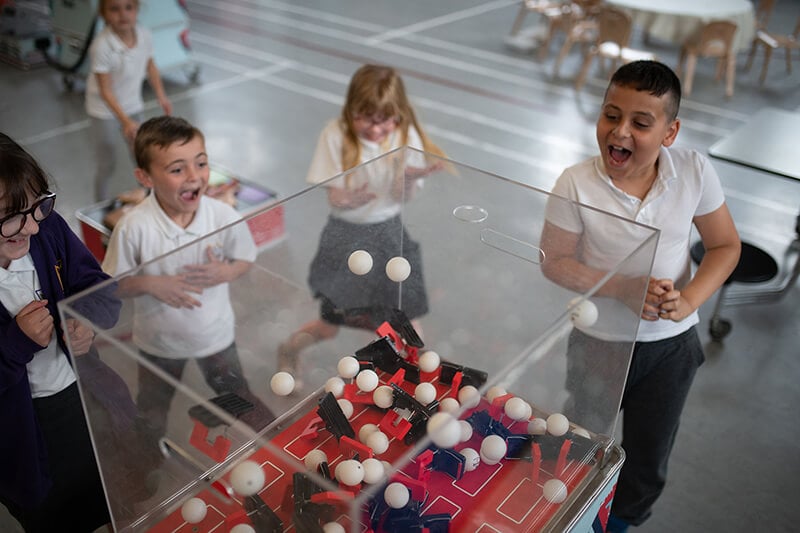Exploring outdoor summer science fun

Summer is here and it’s the perfect opportunity to explore science outdoors. Glasgow Science Centre’s Chris Banks shares some interesting science facts about Scotland’s summer and fun experiments that can be done with friends and family.
Scotland's high position on the globe means that we enjoy lovely long summer days. Shetland can see up to 4 hours more sunlight than that of London. This happens due to the angle of the Earth’s axis as it orbits the Sun. In fact, the Earth’s axis is tilted slightly at 23.5 degrees which means that depending on where you are on the planet, the length of day from season to season can be longer or shorter.
Fancy being a Human Sundial?

A fun experiment you can do to see the movement of the Earth around the Sun is to create a human sundial. It’s best to do this on a very sunny day. You’ll need a large flat surface like a driveway or pavement, or you could even use the sand at the beach.
Pick a spot and mark an ‘x’ on the ground - this will be the centre point of your sundial. In mid-morning ask someone to stand on this spot. They can stand straight with their hands at their sides or maybe they could do a funny pose. Notice where their shadow falls and either trace around it with a piece of chalk, or if you are at the beach, you can just trace around it in the sand. Next to the shadow, write the time of day you drew it, so you don’t forget.
Wait for a few hours and come back in the afternoon. Stand on the ‘x’ in the same way as before and look where the shadow is this time. Trace around it and write down the time. Has the shadow changed position? Has it become shorter and fatter, or maybe longer and skinnier?
Do this one more time in the early evening. What are the changes now?
To make a shadow you need light, something to block that light and something for the shadow to be cast on. When you are outside the sun is the light source, you block that light from hitting the ground, and your body casts a shadow. Light travels in straight lines, it can’t bend around objects, this is why we have shadows.
But why does it change shape? The Earth is always rotating around the sun. Your shadow will always point away from the sun and will change shape depending on where the sun is in the sky.
How to build a rainbow
As the sunlight passes through our atmosphere, it is scattered in all directions by the gases and particles in the sky. The white light of the sun is spread out into all the colours of the visual spectrum, but it is the blue light that is mostly visible which is why we have a blue sky. You can experiment with the visual spectrum by making a rainbow.
Rainbows are beautiful projections of colour in the sky, and you can make your own in your back garden. All you’ll need is a hose on a sunny day.
Go out into your garden and set up your hose to the ‘mist’ function. This works best as it spreads the water finely across a large surface. Stand in a spot where the sun is on your back and your shadow is in front of you, hold the hose as high as you can and start spraying. You should see a rainbow formed in front of your very eyes!

The scientist Isaac Newton first discovered this colourful effect in the 1660s where he used a prism to separate a beam of light from the sun. He noticed seven colours: red, orange, yellow, green, blue, indigo and violet. What colours do you see in your rainbow?
When sunlight travels through the water it refracts, or bends, and the sunlight is separated into its different colours, creating a rainbow. The one you make from your hose is much smaller than the rainbows you see in the sky. This is because the area of water you are spraying is much smaller than the area of rainfall that makes the large rainbows in the sky.
Check out Glasgow Science Centre’s YouTube channel for more fun science demos you can do at home this summer.
Further information
This blog post, written by Chris Banks from Glasgow Science Centre, is adapted from an article that first appeared in Glasgow Times in August 2022.
GSC At Home
Explore more great science content with #GSCAtHome - an award-winning series of 'at-home' style videos bringing science into your home.






